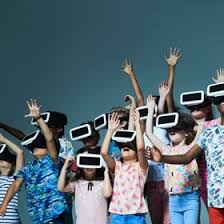I covered many basic topics of artificial intelligence as one of the courses in my undergraduate studies. However, I did not get any chance to include any technological innovations such as AR, VR, remote learning, immersive worlds, or personal assistants in my teaching experience. Even, I have not ever experienced online learning in my whole study. But now due to the pandemic, I get a chance to study online and to explore such technological tools that we can use in our classroom teaching to make it more effective and interactive.
I want to use such tools not to make my teaching interactive but to encourage students to explore the world of coding and create their own virtual reality world. Students studying information technology take the benefit of the VR headsets to create computer programs and fix technology issues. VR is not only used in games but instead, it can transform the way students’ brains function in the classroom. With tools like Tinkercad and AutoCAD, students can generate 3D objects and build virtual worlds, offering experience in computer science skills and using VR technology to engross themselves in their education. There are lots of simulators, virtual labs such as MAT Lab, NS simulator used in wireless sensor networks, and Manets that can be useful for students to simulate the real-world problems on the computer. With the use of these tools students can construct their own knowledge base to solve the problems and which relates them to the theory of constructivism.
The first problem is the cost. And the second is a teacher might have the skills/training to utilize the devices correctly to bring about the best learning experiences as the technology is changing day by day at a very fast pace. To overcome these barriers, we all need to work collaboratively with patience.


Hi Jaspreet Kaur,
How are you? Yes, the more we use technologies, the more we can get their benefits. VR /AR is one of the new innovations that inspire me. As you mentioned, it is not only used for games. As educators and parents, they should try to incorporate VR into the classroom. For example, students from worldwide can use VR to explore the world and create a new learning program! Enjoy our Tech online course together!
Have a good night and take care
Hi Cloe,
I am good, thanks. how are you?
Thanks for your response.
Yes, I agree with you that the more we use technologies more we get benefits of learning from them. everything in education will get changed In 21st-century teaching. Now, It is because of the pandemic that the whole world shifts towards an alternative way to teach students. Every educator is looking for the tools to make the teaching interesting innovative, and interactive and VR and AR are two of them which can give students real-world experience just sitting at their homes. Teachers always need to ready to brush up their skills so that they can survive in the competitive world.
Kind Regards
Jaspreet Kaur
Hello Jaspreet!
I like your thought that VR “can transform the way students’ brains function in the classroom” as I believe the use of it makes the learning more interesting and engaging. Students take interest in their lessons done through VR and they learn the things more effectively and memorize them for long. They reflect on their lessons and construct their knowledge by evaluating the things critically.